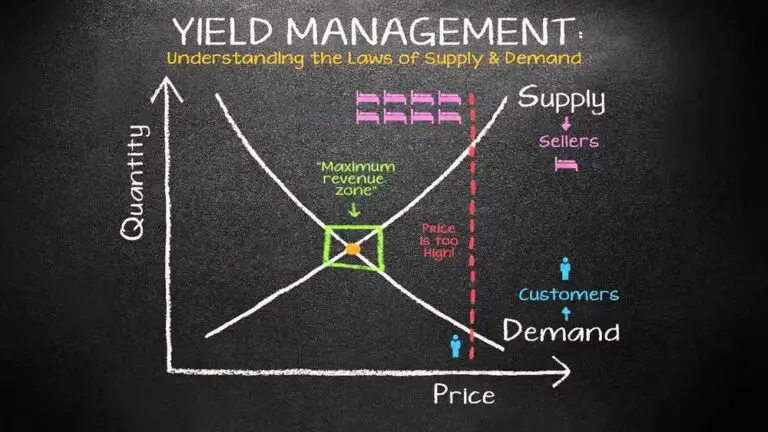
What is Yield Management ?
Yield in culinary terms refers to how much you will have a finished or processed product. Professional recipes should always state a yield; for example, a tomato soup recipe may yield 15 L, and a muffin recipe may yield 24 muffins. Yield can also refer to the amount of usable product after it has been processed (peeled, cooked, butchered, etc.)
For example, you may be preparing a recipe for carrot soup. The recipe requires 1 kg of carrots, which you purchase. However, once you have peeled them and removed the tops and tips, you may only have 800 grams of carrots left to use.
Objectives of Yield Management
- To establish a standard for the quantity and number of portions obtainable from a specific item of food.
- To establish a standard for comparison with operating results and thereby measure the efficiency of the production departments.
- To establish an objective method of further evaluating standard purchasing specifications. • To establish a standard cost factor for the item of food.
- To assist in menu costing and pricing.
- To assist in converting forecast requirements into raw material requirements.
Importance of Yield Management
Yield testing and yield factors are important for ant establishment for the following functions:
- To determine product pricing.
- To set purchase specifications and receiving standards.
- To forecast purchase quantity and ordering levels.
- Establishing standard recipes and portion size.
- For setting control standards.
- Comparison of vendor prices and quality.
- •Monitoring the usage of raw materials.
The procedure for testing for yields
1. Record the original weight/volume of your item. This is your raw weight or as purchased (AP) weight.
A) Whole tenderloin – 2.5 kg
B) Whole sockeye salmon – 7.75 kg
C) Canned tuna flakes in brine – 750 mL
2. Process your product accordingly, measure and record the waste or trim weight.
A) Tenderloin fat, sinew, chain, etc. – 750 g tenderloin trim
B) Salmon head, bones, skin, etc. – 2.75 kg salmon trim
C) Brine – 300 mL canned tuna waste
3. Subtract the amount of trim weight from the AP weight and you will have what is referred to as your processed or edible product (EP) weight. The formula is: AP weight – waste = EP weight.
A) 2500 g – 750 g = 1750 g processed tenderloin
B) 7750 g – 2750 g = 5000 g processed salmon
C) 750 mL – 300 mL = 400 mL processed canned tuna
4. Get your yield percentage by converting the edible product weight into a percentage. The formula is EP weight ÷ AP weight x 100 = yield %.
A) (1750 ÷ 2500) x 100 = 70% for the tenderloin
B) (5000 ÷ 7750) x 100 = 64.51% for the salmon
C) (400 ÷ 750) x 100 = 53.33% for the canned tuna
COOKING LOSS TEST
No yield testing is complete without determining the weight of the item that is available for serving or otherwise called the salable weight. Many items are portioned after cooking. Also there is a considerable amount of weight loss during cooking in terms of loss of moisture and fat.
Thus the primary purpose of cooking loss test is to determine the standard final yield and thus determine the standard portion size and cost. When conducting the cooking loss test, it is important to note down the weight of the item available before cooking, i.e., after all the trimming, cutting and removing of fat (if any). Then the item is cooked as per the standard procedure and the weight of the item is noted down.
If the standard recipe requires the bone and cooked fat to be removed then the item is again weighed after final portioning is done and this is recorded as salable weight. This salable weight is also called the final yield or the portion size/weight of the item. The final yield factor is obtained by dividing this weight by the original total weight of the item purchased. These ratios obtained during the process of yield testing helps to determine which of the several available grades of commodities would yield maximum salable weight of the desired quality. Also, cooking loss tests may be used to compare the results of cooking several pieces at a different temperature or for different lengths of time or in different methods so as to maximize the yield keeping the quality standards in consideration. Once the weight and the value of the salable portion is known, the standard portion size, the prize and the cost can be determined and the standard can be established.
Factors that are involved in yield testing –
• Purchase weight – the weight of the raw material as purchased to a known standard and as per specifications.
• Usable weight – that weight of the item that is available for cooking or further processing after all the unusable and inedible parts are removed. Mainly applies to meat, fish, and poultry and in some cases to fruits and vegetables.